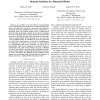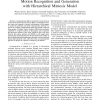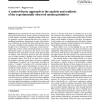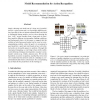76 search results - page 3 / 16 » Modeling and recognition of actions through motor primitives |
IROS
2007
IEEE
13 years 11 months ago
2007
IEEE
— In an effort to ease the burden of programming motor commands for humanoid robots, a computer vision technique is developed for converting a monocular video sequence of human p...
ICRA
2006
IEEE
13 years 11 months ago
2006
IEEE
— Communication skill is essential for social robots in various environments such as homes, offices, and hospitals, where the robots are expected to interact with humans. In thi...
BC
2005
13 years 5 months ago
2005
Recent experiments on frogs and rats, have led to the hypothesis that sensory-motor systems are organized into a finite number of linearly combinable modules; each module generates...
CVPR
2012
IEEE
11 years 7 months ago
2012
IEEE
Simply choosing one model out of a large set of possibilities for a given vision task is a surprisingly difficult problem, especially if there is limited evaluation data with whi...
TROB
2008
13 years 5 months ago
2008
Affordances encode relationships between actions, objects and effects. They play an important role on basic cognitive capabilities such as prediction and planning. We address the p...




